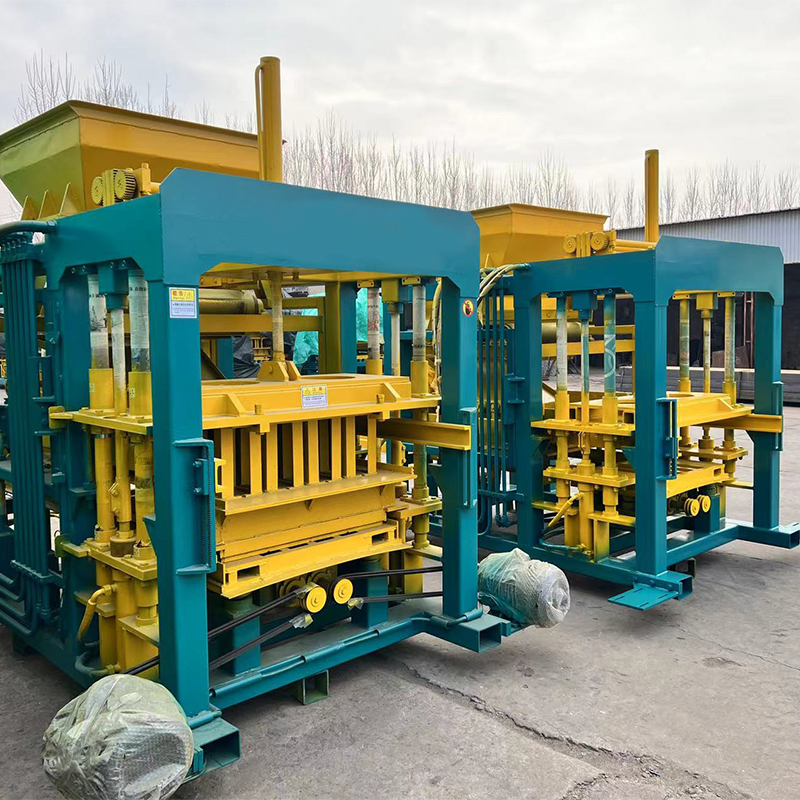
**Title: Transforming Labor Dynamics: The Impact of Full-Automatic Block Production on Skilled Labor Requirements**
**Introduction:**
The integration of automation in the construction industry has reshaped traditional labor dynamics, and full-automatic block production stands at the forefront of this transformative shift. As technology continues to advance, it is essential to examine how the adoption of full-automatic block production impacts the demand for skilled labor. This article delves into the multifaceted implications on workforce dynamics, skill sets, and the evolving role of skilled labor in the context of automated block manufacturing.
**I. Streamlining Production Processes:**
Full-automatic block production systems leverage cutting-edge technology to automate various stages of block manufacturing, reducing the reliance on manual labor for repetitive and physically demanding tasks. This streamlining of production processes has direct implications for the type and quantity of skilled labor required on-site.
**II. Changing Skill Set Requirements:**
The traditional skills associated with manual block production, such as manual mold filling and demolding, are gradually being supplemented by a demand for expertise in machine operation, maintenance, and troubleshooting. Skilled labor in the context of full-automatic block production encompasses individuals proficient in the intricacies of automated machinery, computerized control systems, and the ability to interpret and respond to real-time data.
**III. Maintenance and Technical Expertise:**
As full-automatic block production systems become more sophisticated, the need for skilled technicians for maintenance and troubleshooting increases. Skilled labor is essential for diagnosing technical issues, conducting routine maintenance, and ensuring the optimal functioning of the automated machinery. This shift requires a workforce with a strong foundation in mechanical and electrical engineering, as well as a nuanced understanding of the specific technologies employed in the automated systems.
**IV. Training and Skill Development Programs:**
The evolution of skilled labor requirements necessitates proactive measures in training and skill development. Manufacturers and industry stakeholders must invest in comprehensive training programs to equip workers with the knowledge and expertise needed to operate and maintain full-automatic block production systems effectively. This investment not only benefits the workforce but also ensures the longevity and efficiency of the automated manufacturing processes.
**V. Impact on Manual Labor Roles:**
While automation reduces the demand for manual labor in certain aspects of block production, it also opens up opportunities for upskilling and redeployment. Manual labor roles may evolve to focus on tasks that complement automation, such as quality control, inspection, and more intricate finishing processes that require a human touch. This adaptation ensures that the workforce remains an integral part of the production ecosystem.
**VI. Enhanced Productivity and Precision:**
The adoption of full-automatic block production positively impacts productivity and precision. Automated systems can work continuously without fatigue, ensuring consistent quality and output. Skilled labor, in this context, plays a pivotal role in overseeing and optimizing the automated processes to achieve maximum efficiency and output.
**VII. Job Creation in Technical Domains:**
While the demand for certain manual labor roles may decrease, the rise of full-automatic block production creates new opportunities in technical domains. Skilled technicians, engineers, and maintenance professionals become indispensable in supporting and advancing automated manufacturing capabilities. This shift contributes to job creation in areas that align with the evolving technological landscape.
**VIII. Economic Considerations:**
The economic impact of full-automatic block production on skilled labor is complex. While automation may reduce the need for a large workforce in certain aspects of production, the increased efficiency, scalability, and precision can contribute to cost savings and overall economic growth. The challenge lies in ensuring a smooth transition for the existing workforce and facilitating their adaptation to the changing skill requirements.
**Conclusion:**
The impact of full-automatic block production on skilled labor requirements is a dynamic and evolving phenomenon. While automation streamlines certain aspects of production, it also ushers in a new era of opportunities for skilled labor in technical and maintenance domains. The key to successfully navigating this transition lies in proactive investment in training programs, fostering a culture of continuous learning, and facilitating the seamless integration of skilled labor with advanced automated technologies. As the construction industry embraces automation, the synergy between skilled labor and full-automatic block production systems will shape the future of efficient, precise, and technologically-driven construction practices.
